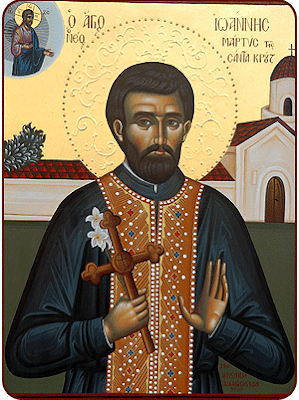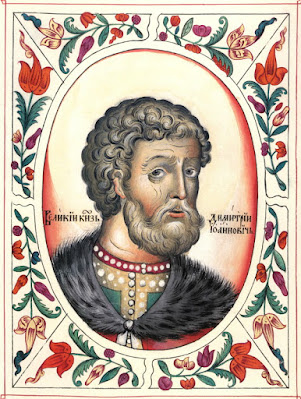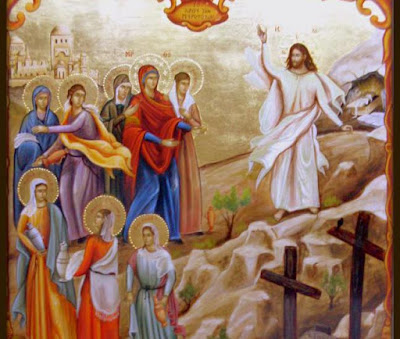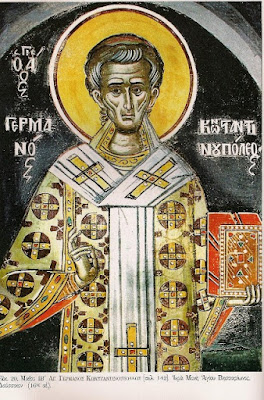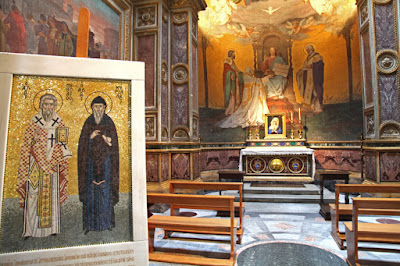By Monk Gerasimos Mikragiannanitis
Synaxarion
On the 11th of this month, we commemorate the Holy Venerable Martyrs Olympia and Euphrosyne of the Sacred Monastery of Karyes in Thermi of Lesvos, who contested in the year 1235.
Verses
Olympia having lived venerably,
Was seen as a Martyr of the Lord at the hands of pirates.
On the eleventh Olympia reposed having suffered and bewailed.
Blessed Olympia was born in Peloponnesos in the year 1200 to pious parents who were from Constantinople. Her father was a priest and her mother was the daughter of a priest, and it is unknown why and when they moved to Peloponnesos. At the age of ten she was orphaned of her parents, having departed life, so she was sent by her relatives to the Monastery of Karyes, which is located in Thermi on the island of Lesvos, where the abbess was her maternal aunt, whose name was Dorothea, and there she completely dedicated herself to God. When she became 19 years old, she was tonsured a nun, in the year 1219, and in her 25th year, the abbess Dorothea having died, she became abbess of this Monastery in the year 1225. After 10 years had passed, on the 11th of May in the year 1235, a swarm of pirates attacked the Monastery, striking like wild wolves, causing the nuns to scatter, plundering and destroying everything. At that time there were 30 monastics living in asceticism there, six of whom were dishonored by the savage barbarians, fleeing in grief to the mountains. However Olympia, as the abbess, stayed behind with a sister who was advanced in age, whose name was Euphrosyne, to withstand the rage of the assaults of the pirates. They suspended Euphrosyne onto a tree, which they set on fire; while they burned the body of blessed Olympia with burning torches. Then taking a fiery iron rod, they passed it right through her ears, and in this manner was her martyric end. Then the pirates, to complete their barbaric mania, took the body of the Martyr, and nailed it to a board of wood, and this is how she was buried, after the barbarians fled, by certain Christians, being unable to remove the nails, cutting the flesh of the blessed one by removing the nails, which numbered 20, the same number that were found with the bones of the Martyr, when her grave was discovered.




























